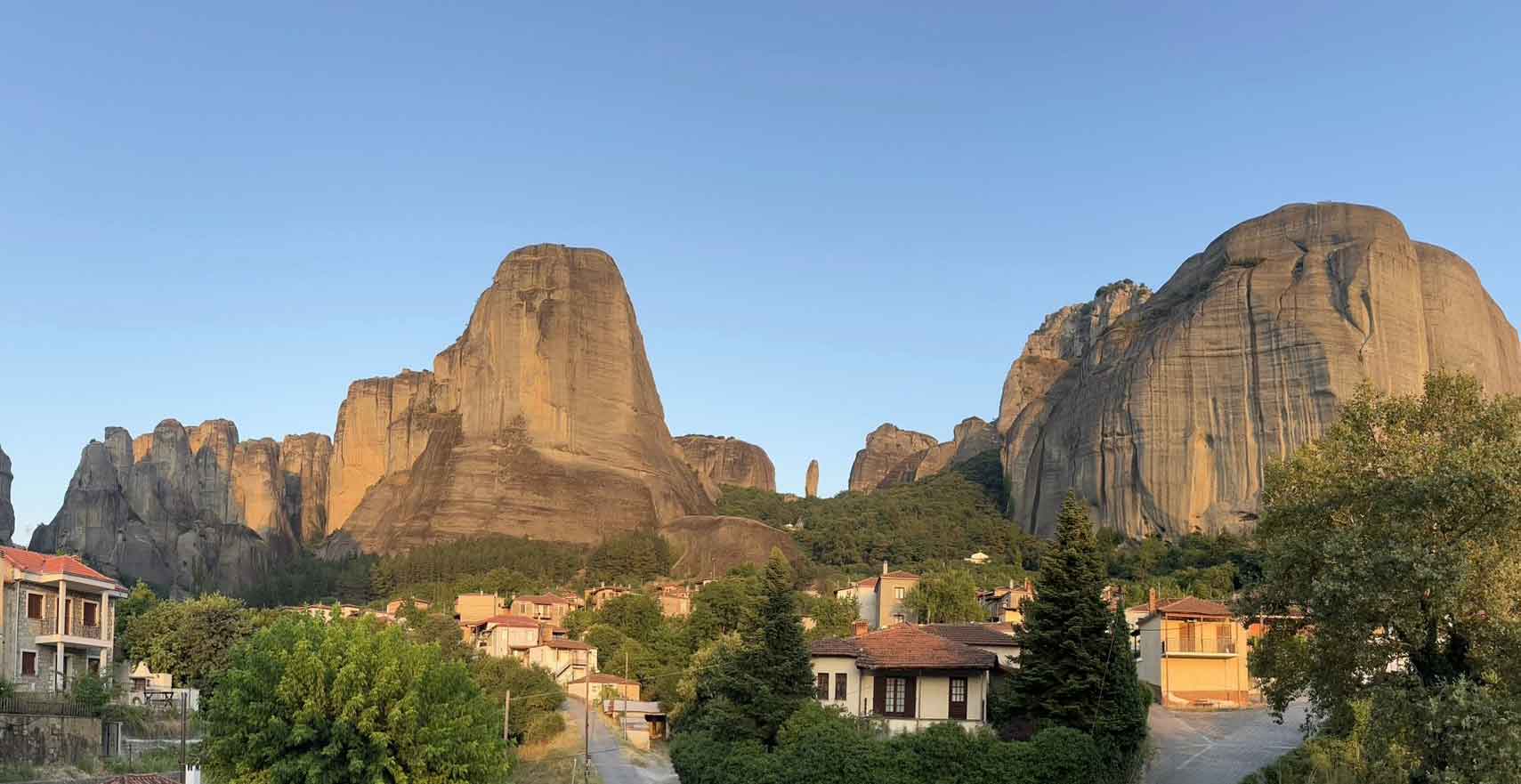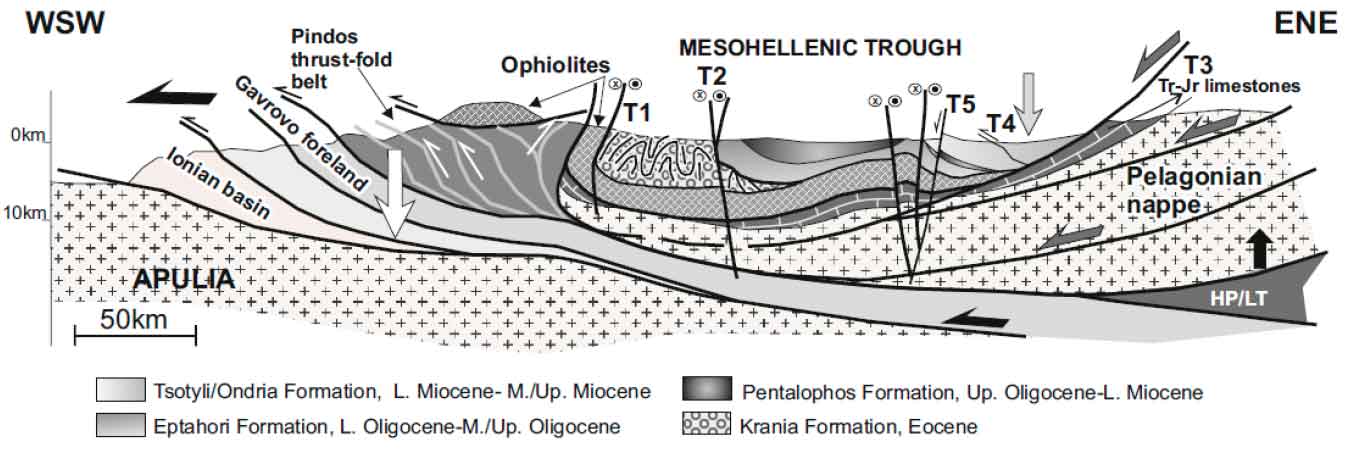
General sunset view of the landforms of Meteora. (Photo: Asier Hilario).
Geological Period
Oligocene to Miocene
Main geological interest
Stratigraphy and sedimentology
Geomorphology and active geological processes
Location
Thessaly Region, Greece
39°43’18”N, 021°37’50”E
General sunset view of the landforms of Meteora. (Photo: Asier Hilario).
One of the most impressive molassic accumulations of the world with an iconic landscape of pinnacles and rock pillars formations.
Meteora is one of the most iconic geological landscapes of the World. It is a complex of impressive rock pillar formations made by a huge accumulation of molassic sediments. The complex of Meteora is a perfect conjunction of tectonic, sedimentologic and geomorphologic processes which are very important for understanding the geology of the Hellenic orogen Byzantine monasteries were built on the top of many of these rocks pillars, creating a unique sacred lanscape declared as a mixed UNESCO World Heritage Site in 1988, including criteria viii for its geological value. Meteora is one of the most important touristic destination of Greece with over 2 million visitors every year.
- Geological description
Meteora landform is a complex of impressive rock pillar formations composed of molassic sediments deposited in the Mesohellenic trough. The spectacular pinnacles are 200 meters high and up to 300 meters wide. The Meteora rocks belong to the “Pentalophos Formation,” of Upper Oligocene – Lower Miocene age (Brunn, 1956). The maximum thickness of the formation is about 4,000 meters. It is mainly characterized by thick beds of sandstone and the intense presence of conglomerates of various sizes, which in Meteora reach large dimensions. The sediments are essentially of marine origin; however, there have also been interpreted as fluviatile and terrestrial material. The stratigraphic succession of the Meteora conglomerates includes the Lower Meteora Conglomerates composed of fan-deltas and the Upper Meteora Conglomerates, composed of dominantly fluvial deposits. The conglomerates were deposited in a Gilbert-type deltaic system, where large channels occurred, entrenched vertically to the progression axis of the delta. The current formation of Meteora landforms is due to tectonic fracturing, which formed surfaces of discontinuities, erosion by flowing water and to a smaller extent by aeolic erosion of the materials of the molassic series. However, the tectonic activity had a significant impact on their formation and distribution to form this unique morphology. Meteora, beyond their natural beauty, is a very important site for understanding the geology of the Hellenic orogen.
- Scientific research and tradition
The most comprehensive sedimentary description of the formations comprising the Meteora rock spires is that of Brunn (1956). Since then several other national and international researchers studied the area from different geological disciplines. Meteora is a common destination for universities from all over Greece and surrounding countries.
- Reference
Desprairies, A. (1979) ‘Etude sedimentologique des formations a caractere flysch et molasse, Macedoine, Epire (Grece)’, Mémoires de la Société géologique de France, 136, pp. 1–80.
Ferriere, J. et al. (2011) ‘Tectonic control of the Meteora conglomeratic formations (Mesohellenic basin, Greece)’, Bulletin de la Société Géologique de France, 182(5), pp. 437–450. Available at: https://doi.org/10.2113/gssgfbull.182.5.437.
Migoń, P. (2020) ‘Geomorphology of conglomerate terrains – Global overview’, Earth-Science Reviews, 208, p. 103302. Available at: https://doi.org/10.1016/j.earscirev.2020.103302.
Ori, G.G. and Roveri, M. (1987) ‘Geometries of Gilbert-type deltas and large channels in the Meteora Conglomerate, Meso-Hellenic basin (Oligo-Miocene), central Greece’, Sedimentology, 34(5), pp. 845–859. Available at: https://doi.org/10.1111/j.1365-3091.1987.tb00808.x.
Vamvaka, A. et al. (2006) ‘Geometry and structural evolution of the Mesohellenic Trough (Greece): a new approach’, Geological Society, London, Special Publications, 260(1), pp. 521–538. Available at: https://doi.org/10.1144/GSL.SP.2006.260.01.22.
Zelilidis, A., Piper, D.J.W. and Kontopoulos, N. (2002) ‘Sedimentation and Basin Evolution of the Oligocene-Miocene Mesohellenic Basin, Greece’, AAPG Bulletin, 86(1), pp. 161–182. Available at: https://doi.org/10.1306/61EEDA6C-173E-11D7-8645000102C1865D.
- Author(s)
Nikolaos Zouros.
Director of the Natural History Museum of the Lesvos Petrified Forest, Professor in the Department of Geography, University of the Aegean. Greece.


